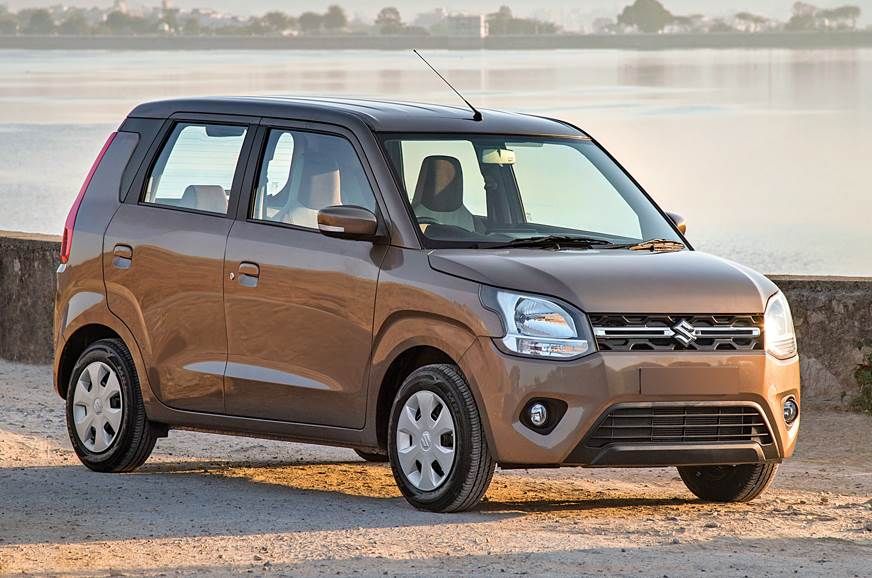
The Maruti Suzuki Wagon R, which was first launched in India on December 18, 1999, has just completed 25 years in our market. That makes it one of the longest surviving nameplates alongside very few other cars such as the Honda City and Mercedes-Benz E-Class. Notably, the Wagon R has also been India’s bestselling car for the last three years in row – FY22, FY23 and FY24.
- Wagon R is currently in its third generation in India
- Maruti says it has sold over 32 lakh units of Wagon R in 25 years
- Is currently available with 1.0-litre and 1.2-litre engine options
In the last 25 years, the Wagon R has seen two generation updates, and Maruti Suzuki claims it has sold over 32 lakh units of the hatchback in that period. Originally a Kei car in Japan, the Wagon R is a favourite among entry-level car buyers in India for its tallboy design and spacious interiors.
Maruti Suzuki Wagon R: an overview of all generations
First-generation (1999-2009)
The first-gen Wagon R was introduced in 1999 as a direct rival to the then Hyundai Santro, and it was quick to gain popularity thanks to its ability to seat tall passengers with ease. It was powered by a 67hp, 1.1-litre F10D petrol engine, and over the years, it was updated with two facelifts – the first arrived in 2003 with minor cosmetic updates, but the second one that came in 2006 had more comprehensive changes, and it even received a new LPG variant.

Interestingly, as synonymous as the Wagon R is with space efficiency today, it wasn’t quite true with the first-gen model. Available with a 50:50 split rear seat, the first-gen model was registered as only a 4-seater car. However, that didn’t bode well with Indian buyers who wanted a three-seat layout for the rear. Maruti later rectified this with further updates to the hatchback.
Second-generation (2010-2018)
 CNG was introduced with the second-generation of the Wagon R
CNG was introduced with the second-generation of the Wagon R
The second-gen Wagon R got an all-new platform which was based on the fourth-gen Wagon R in Japan – it was larger, got safety updates in the form of ABS and airbags and was powered by a 68hp, 1.0-litre, three-cylinder K10B engine. CNG was also introduced for the first time on the Wagon R with the second-gen of the hatchback.
A facelift arrived in 2013 with cosmetic updates and more features on the inside. Then in 2014 Maruti Suzuki introduced a new Stingray variant which was sold parallelly to the regular hatchback. It was positioned as a more premium variant which even got projector headlamps (a huge novelty at that time for this segment), but Maruti later dropped the Stingray moniker and sold it as just the top-spec variant of the hatchback.

Third-generation (2019-present day)
The third-gen Wagon R adopted the Heartect platform, sharing it with a host of other cars from Maruti’s stable. It grew larger still, and by now, it was completely unrelated to the Wagon R sold in Japan. This was also the first time the Wagon got two engine options – the base K10B 1.0-litre petrol engine was carried over from its predecessor, but also got a new 82hp, K12M 1.2-litre petrol engine; a factory-fitted CNG kit, however, was only made available with the 1.0-litre engine.

A small update was introduced in February 2022 to comply with the latest emissions regulations – both engines were updated with Dualjet tech and idle start/stop system, and it also got a very minor cosmetic job.
Earlier in June this year, Maruti even crossed the 1 million sales milestone mark with the third-generation Wagon R in India. Maruti also claims that the Wagon R is the highest-selling CNG model in India with 6.6 lakh CNG units sold to-date.
Also See:
Toyota Hyryder accounts for 37 percent of rebadged Maruti sales
Maruti Grand Vitara 7-seater spied with e Vitara design cues